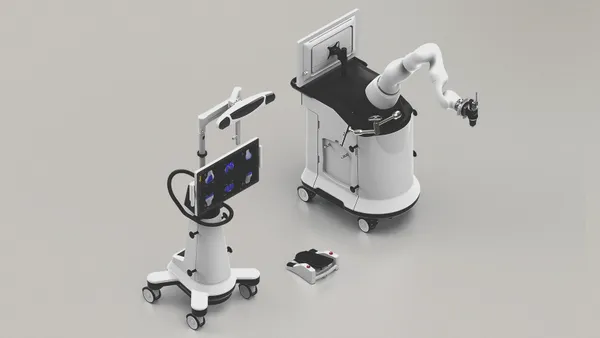Dive Brief:
-
Philips has posted three-year data on its Stellarex low-dose paclitaxel-coated balloon, confirming the durability of the peripheral arterial disease results seen at earlier readouts.
-
Across two clinical trials, Philips showed Stellarex beat or matched uncoated balloons against key endpoints, including rates of primary patency and mortality. Patency rate is the likelihood that a vessel will remain open.
-
The data hand Philips a potential advantage over BD and Boston Scientific, its rivals for the low-dose market, by giving it longer-term evidence of how its device performs.
Dive Insight:
Philips now has three-year data from two clinical trials that used Stellarex in the superficial femoral artery and popliteal arteries of patients with peripheral arterial disease. The data were shared this week at the New Cardiovascular Horizons Annual Conference.
In one of the trials, Philips' pivotal study, 64.2% of patients treated with Stellarex had freedom from loss of patency at three years, meaning blood continued to flow through the treated part of the artery. The patency rate among patients treated with uncoated balloons was 51%. The Stellarex and uncoated balloon patency rates in the second, European trial, were 67.5% and 59.9%, respectively.
The patency rates have slipped since the two-year readout, when Stellarex achieved a rate of 75.2% in the European trial, but remain superior to the results achieved by uncoated balloons and in line with data on rival drug-coated products.
Neither BD's Lutonix nor Boston Scientific's Ranger, the other low-dose, 2.0 μg/mm2 balloons, has three-year data to compare to the Stellarex results. Data on higher-dose rivals are available, however. For example, Medtronic's IN.PACT Admiral achieved a three-year patency rate of 69.5%, compared to 45.1% in the control arm of that study.
Differences in the patient populations and other variables unrelated to device performance make such cross-trial comparisons unreliable. Philips claims its pivotal trial enrolled particularly complex patients, pointing to the rates of comorbidities and severely calcified lesions to make its case.
Around 10% of patients across both arms of both Philips trials died over the course of the three-year follow-up. In one trial, the death rate was numerically higher in the Stellarex arm, but, in the other study, a higher proportion of subjects in the control cohort died.
The findings are important in light of a meta-analysis linking paclitaxel‐coated balloons to increased risk of death and the market disruption it caused. That study associated low-dose devices such as Stellarex with a significantly lower risk of death than higher-dose products, although a subsequent analysis funded by Medtronic disputed that finding.
The three-year death rate seen in the Stellarex trial is comparable to that seen in Medtronic's data on the higher-dose IN.PACT Admiral. The difference between the mortality rates in the treatment and control arms of the Stellarex study was much narrower, though.











